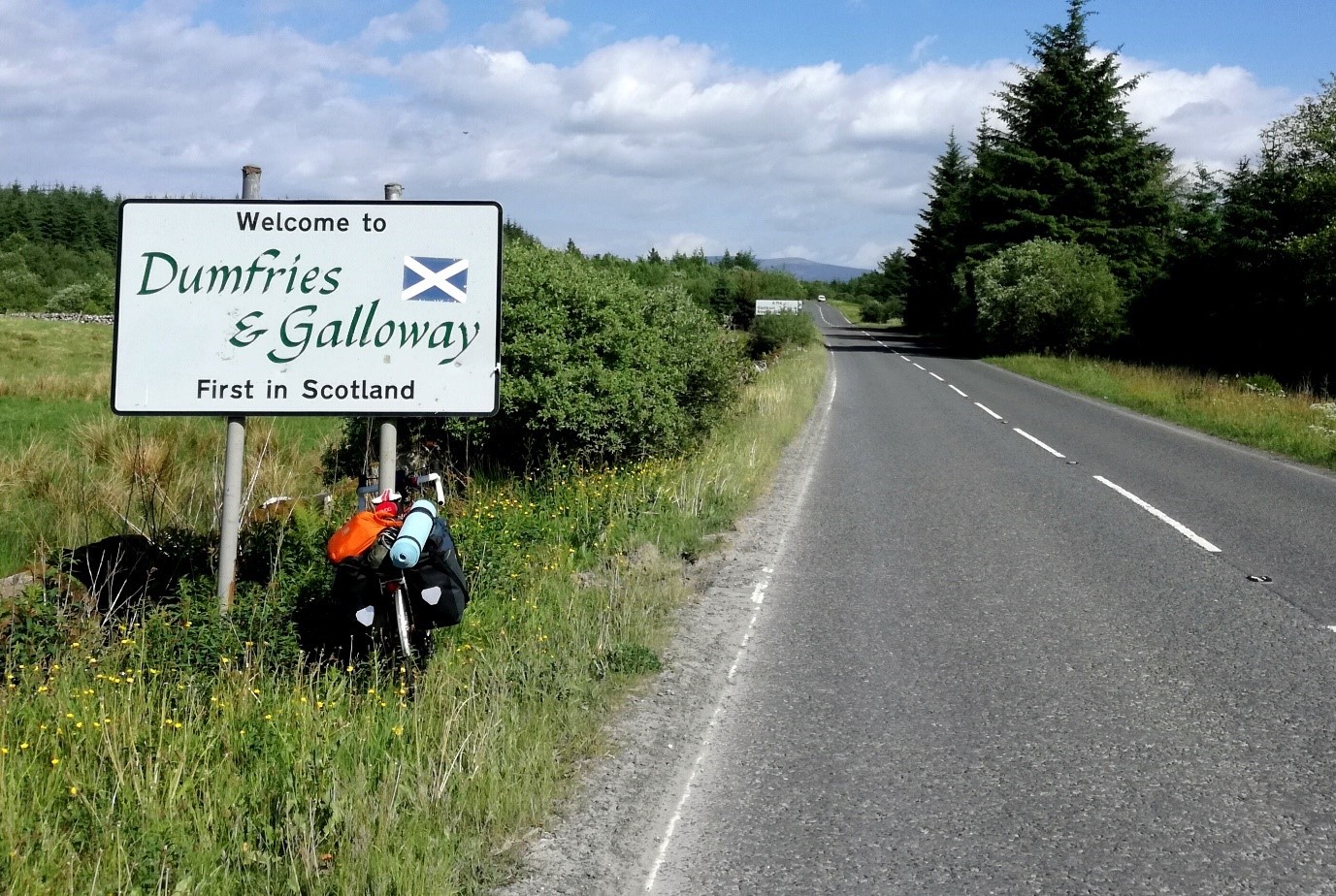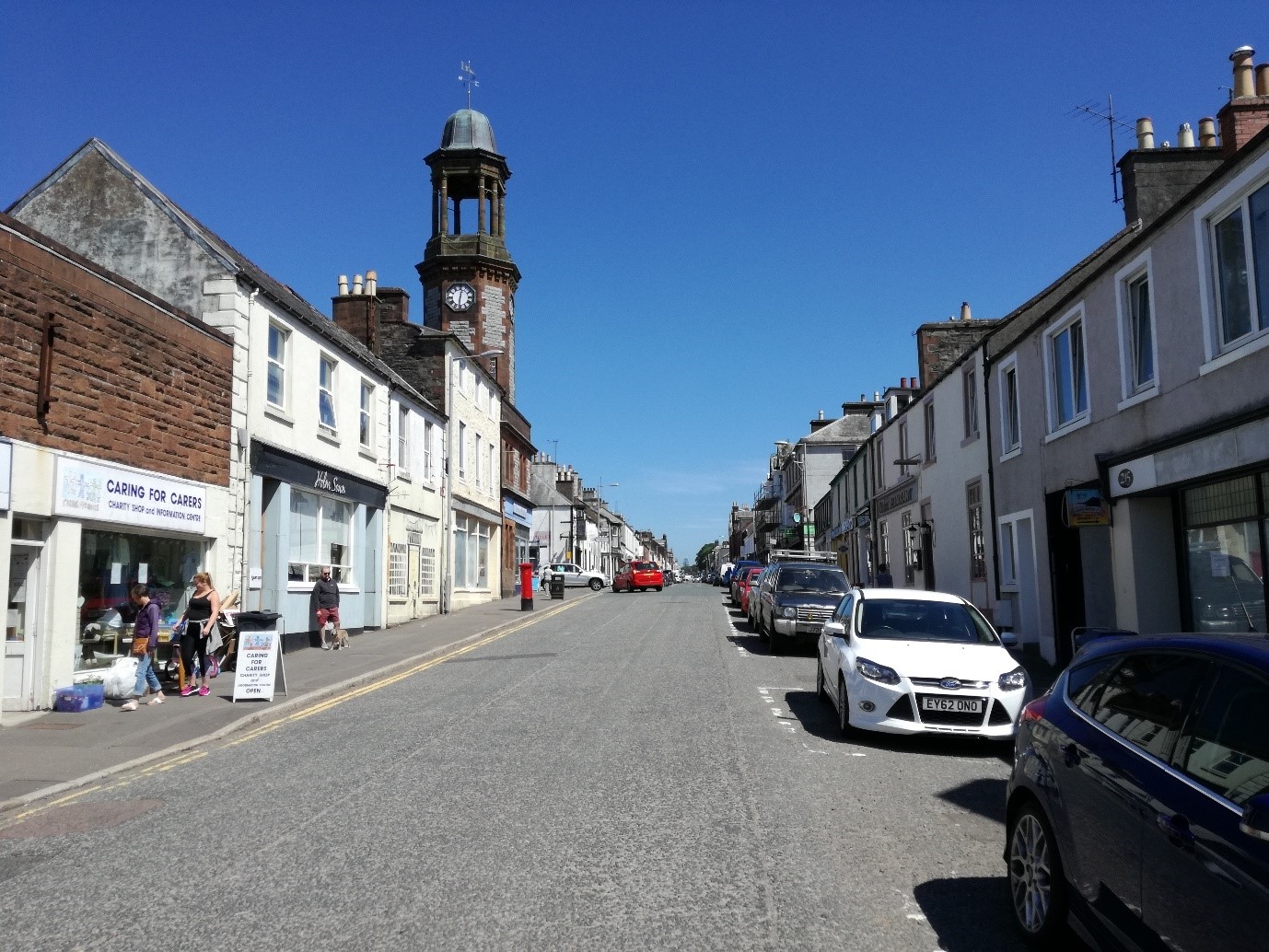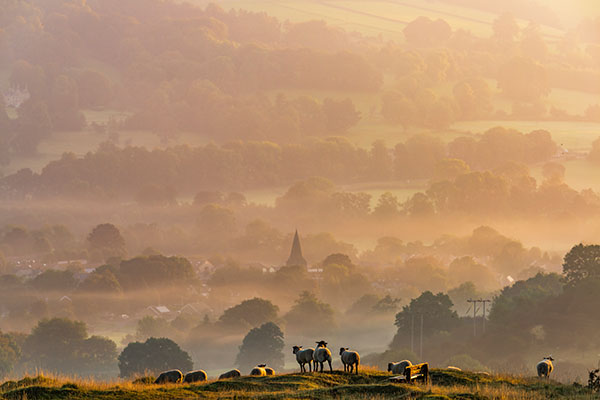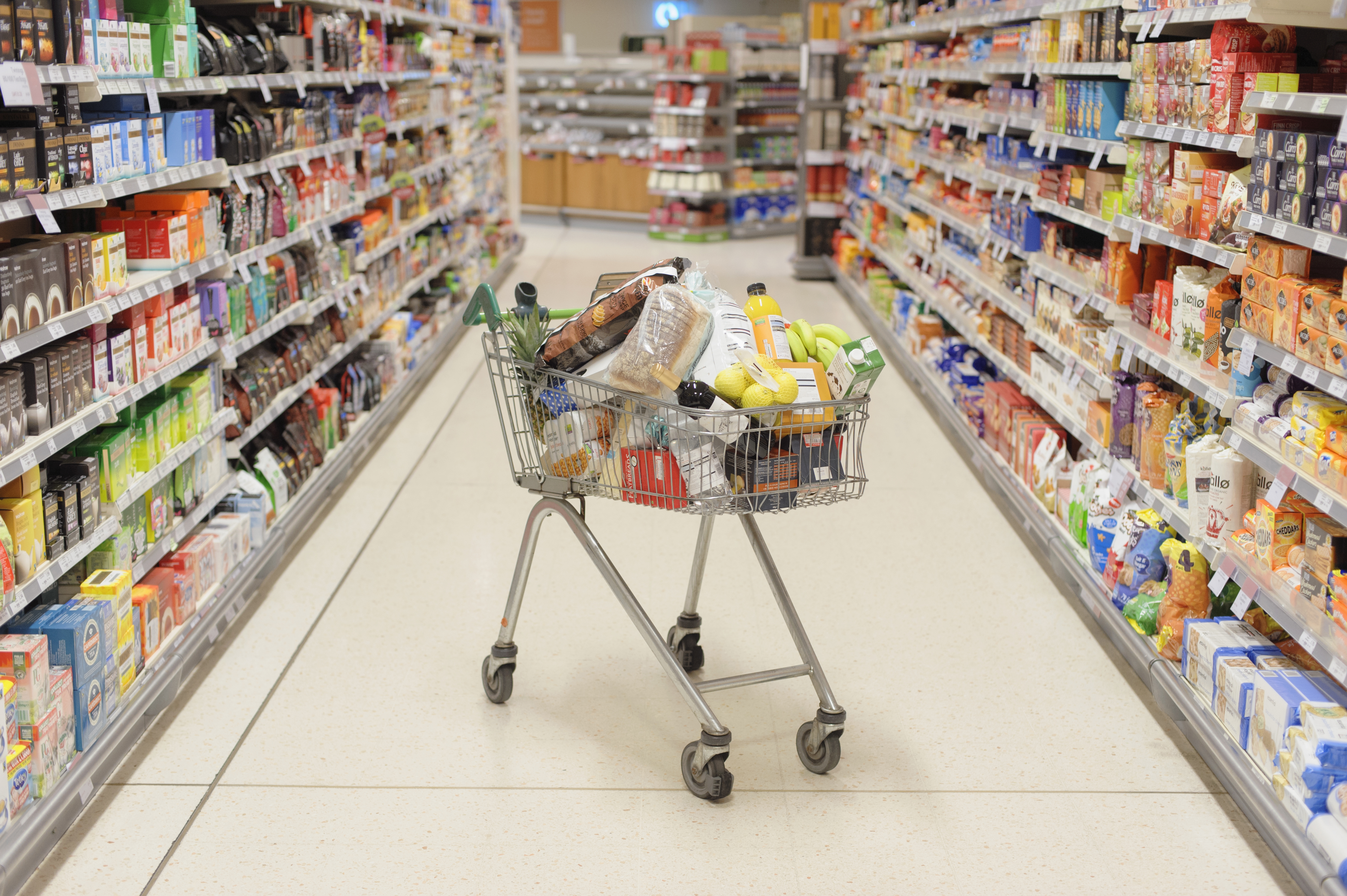Majestic coastline, tranquil lochs and enchanting forests, coupled with a rich agricultural history and food culture; it’s little wonder that this area has inspired poets, writers and artists for centuries. Do you know it? This isn’t the Scottish Highlands. Zip past it on the A74 or West Coast Mainline on your way through the Borders and you, like so many others, will miss it.
Dumfries and Galloway (D&G) is a stunning region of south west Scotland pervasively overlooked by tourists, investors and governments alike. It is also one facing deep structural challenges, tied to global economic trends, under-investment and demographic change. Earlier this year I jumped on my bike for the FFCC’s UK-wide tour to hear what regional politicians, local policymakers, foresters, dairy farmers, community organisers, activists, small holders, shop owners, bakers, brewers and chocolate makers thought about the past, present and future of food, farming and the countryside in their parts.
I discovered a locality of dedicated, innovating communities using novel models of farming, enterprise and food production to traverse the buffeting winds of national and global change. This is a story of a region’s struggle, against the odds, to get noticed by investors, public authorities and tourists – the fight to get on the map.

The flight of industry, opportunity and youth
As I set off for D&G, I received word that Pinneys of Scotland, a seafood factory owned by the food giant Young’s, would be closing its factory in Annan. As a major employer of skilled labour in the area, the news was devastating for local people. The closure not only threatened the jobs of hundreds of factory employees; it put at serious risk many of the nearby businesses and suppliers that depend on the workforce and supply chain to survive.
In a rural economy like D&G, the local MSP fighting against the closure told me, the withdrawal of a single supplier like Pinneys is especially dangerous. The region has a rich history of industry, skilled manufacturing and food production. But that legacy has continued to fade as they experience the retreat of the biggest enterprises to urban areas (like Edinburgh and Glasgow) and production hubs (like, as in this case, Lincolnshire), often drawn by the allure of cheaper labour and reduced costs.
The result for locals, she continued, are diminishing opportunities for skilled, secure work. A nearby dairy farmer captured the broader hollowing effects of decline on the local area. “Look at Dumfries,” I’m told. “All the manufacturing jobs are gone, but the place is full of people. There’s a downward spiral going on – we’ve lost the last cinema in the town, we’ve more or less lost everything.”
As I moved through the region I wanted to know if they thought that public authorities, be it Brussels, Westminster or Holyrood, had their backs. No, was the continued answer. For many years D&G has slipped through the net of investment programmes. A local council worker tells me, for example, how the reliance of the rural economy on micro, small and medium sized enterprises means that 94% fall outside the scope of the government’s coveted Scottish Enterprise scheme. The result, he puts it, is an “economic gap between here and the rest of Scotland.” “Everyone has a city-based approach”, another person adds. Despite all the hype, “the benefits haven’t fed down from Glasgow and Edinburgh.”
Nowhere are the effects of that gap starker than on those growing-up in the region. Until recently there was no University, and without decent prospects for younger people, they’ve simply moved away. “We’re haemorrhaging young people: there’s an expectation for young people to go away”, a market organiser tells me. This has an especially profound impact on those trying to sustain family farms and businesses in the area, raising an existential challenge to the legacy of generations of work. “Young people aren’t coming forward to fill the roles here”, one tells me. “No one here wants to be a farmer anymore”, adds another. “If you’ve got a succession plan, then you’re lucky.”
Networked communities & local leaders

The people of D&G know that the challenges facing their region are fierce ones. But they are doing what they can to fight back. As I moved through the beautiful rolling hills and forested parks, I continued to meet people, across different sectors, drawing on a mix of networked community knowledge, individual leadership and values-led enterprise to try to turn things around.
Whether they’re just starting up a business or have been going for decades, you feel that local people mean, wherever they can, to support one another. Yes, there are challenges and sometimes profound disagreements. But walk down the main street of a place like Castle Douglas, the region’s designated food town, and you will find an active community of food producers and sellers, from brewers to chocolatiers, sharing their ideas and expertise with one another. Travel miles out into the countryside and you will hear about the same touch stone individuals and businesses, often on the other side of the region, serving as examples and leaders to others. This profound sense of place-based and sectoral connectivity – a civic tissue that binds local people together – provides an enormous source of resilience and unity in a difficult economic climate; so much so that its economic value is now formally recognised by the Council, which is investing in local business networks and local sectoral sharing of knowledge.
But no network or community is inherently secure. In D&G, they could not function without the commitment of sometimes very small pockets of hard working, values-driven individuals. At River Garden Auchincruvie, for example, Mark Bitel is pushing forward an experimental model of horticulture-centered recovery while running his own businesses. At the Ethical Dairy, David and Wilma work tirelessly to prove that genuinely sustainable, calf-suckled dairy farming is economically viable, in the face of considerable sectoral and regulatory opposition. While in Kirkcudbright, Naoimi balances her voluntary work organising the town’s thriving food markets against her full-time job in adult social care.
All these people do it because they have a passion for their place. They have a deep sense that what they are doing is right, and crucial for the place they called home. But, as Naoimi put it to me, they also know that there is nothing inevitable about what they do. “We know that there’s no one behind us”, she says. As we talk, she gets emotional about how important her work is to the area. Succession planning is genuinely scary.
“Tourism or nothing”
The people of D&G are trying to bring genuine and sustainable long-term change. But despite the awesome work I encountered throughout my journey, many of my conversations came back to the same central dilemma. Are these ways of fighting back actually enough to tackle the profound challenges that locals know to be facing the region?
Nowhere was this clearer than the continued and often devoted appeal to tourism as the fall back, fix all option. Being placed between two other booming rural economies, the Lake District and Scottish Highlands, in nearly every conversation I heard the same burning question, even frustration: why was their region, despite its clear natural beauty, not receiving the same bounties that their Southern and Northern neighbours enjoyed?
Compelled by the region’s continued industrial decline, several groups are now putting their energy into hope of a new National Park status. The Galloway Forest Park is, in comparison to other parts of the country, a relatively untapped tourist asset, slap bang in the middle of the region. By drawing in tourist trade, I was told, the Park had the potential to fuel an upward economic spiral while allowing D&G to keep its identity as a values-driven food producing region.
But so far that argument has fallen on death ears. And here’s the chicken and egg problem that comes with not being sufficiently established on the map. Without a thriving rural economy which people want to visit, there simply isn’t the appetite from authorities to invest in the region. The Scottish government hasn’t given positive signs of it happening: they want to focus on the Cairngorms and Highlands instead.
Why getting on the map might not be enough
It’s understandable, in a stunning part of the world like D&G, why tourism remains so illusive. For those whose hearts and souls lie in the lay of the land, it offers a solution that values the reciprocal relations between healthy ecosystems and social connections. But given the deep-set and pervasive issues facing the region, there’s still a tension as to whether tourism, even if it did come, would ever be enough.
For the youth that move away, it is the allure of skilled, secure jobs that might one day enable them to buy a place of their own. For those facing redundancy this year, they need decent alternatives to keep going. Tourism isn’t always the golden ticket. As the local MSP fighting the Pinneys closure told me, “It can’t all be about local businesses and tourism. It’s too easy to pedal the narrative that ‘tourism is everything’”. And certainly, as we have seen in the Highlands, tourism can amplify existing structural problems. Rural economies need a balanced and diverse economic base to navigate the turbulence of national and global economic trends which is why, the local MSP tells me, there is a “need to create an agile manufacturing base and support the growth of STEM.” But with the closure of Pinneys on the horizon, the trends in Dumfries and Galloway seem to be going in the opposite direction.
Tom is the RSA's Action and Research Centre Coordinator.
Follow the RSA's Food Farming and Countryside Commission on Twitter and Instagram.
Related articles
-
Counting on recovery: collecting the data to inform policy post-crisis
Tom MacMillan
We’re starting to gather evidence on community responses to the pandemic, to help shape post-crisis policy. If you are too, let’s team up.
-
There’s more that unites us than divides us: the consensus for bold actions for the climate and nature emergencies
Sue Pritchard
There is overwhelming consensus as to what we need to do to tackle climate change. We now need courageous leadership, radical thinking and urgent practical action.
-
Toying with transition – My week on the road in Devon and Dorset
Kenny McCarthy
Kenny McCarthy explores how farmers in Devon and Dorset are responding to a changing world as part of the RSA Food, Farming and Countryside Commissions UK tour.




Be the first to write a comment
Comments
Please login to post a comment or reply
Don't have an account? Click here to register.